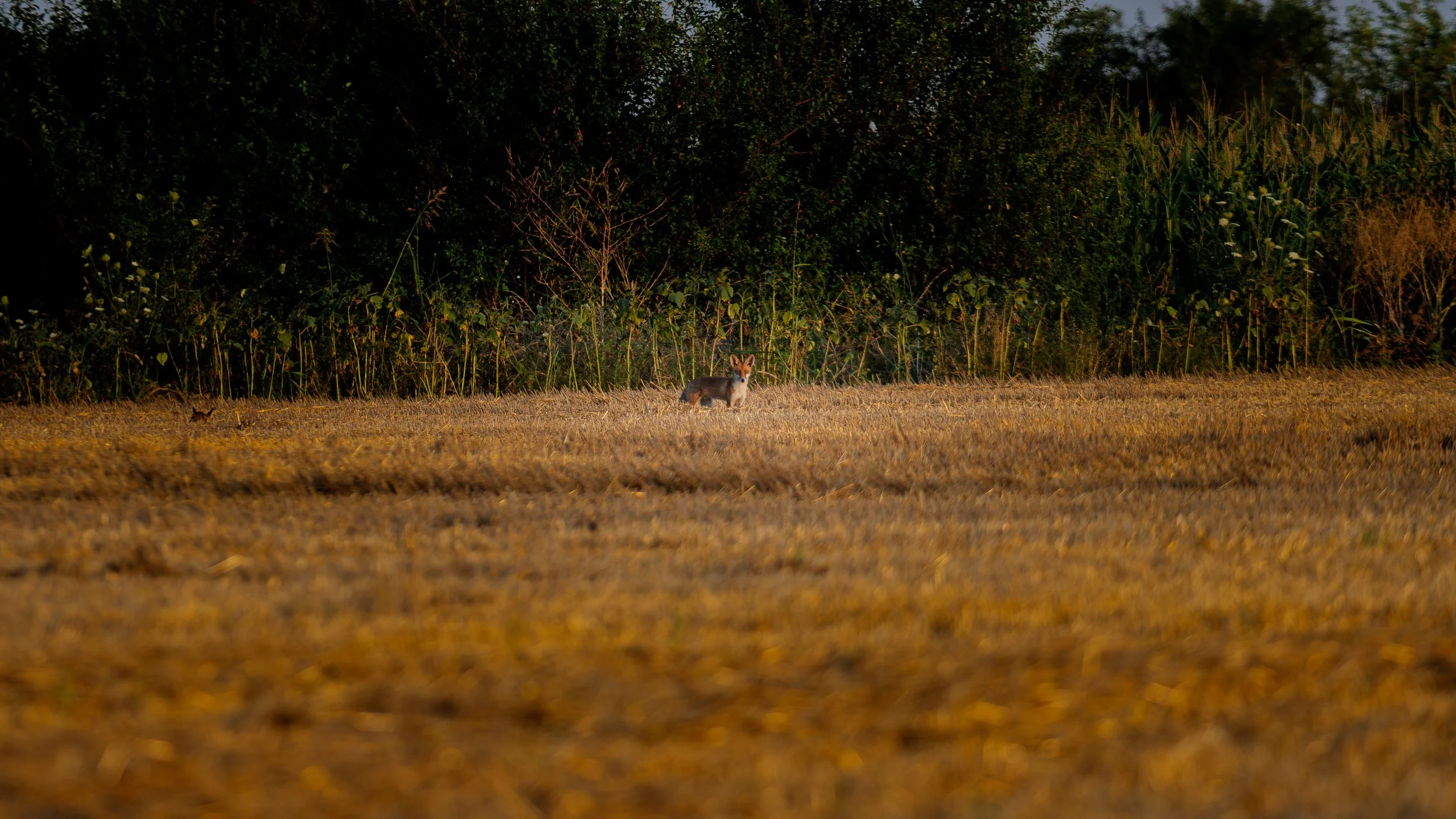I Broke My Prime Lens Photographing Foxes
The worst part about equipment failing isn't the money—it's missing the shot you've been chasing for weeks.
Last year, I found something special. While hunting for long-eared owls in a field near my home, I discovered a fox den. Not just any den, but one where two beautiful foxes would come out during golden hour, right where I could photograph them.
But here's the thing about wildlife photography—nothing ever goes according to plan.
It started simple enough. I'd been visiting this field regularly, initially tracking owls. After several visits, I managed to capture a great shot of a long-eared owl in flight. Success, right? This year, I returned to the same spot, expecting to find my feathered subjects again.
The owls were gone.
But something else was watching me. Every time I packed up my gear, disappointed by another owlless evening, I felt eyes on me. Sure enough, when I'd look back toward the road, there it was—a fox, staring right at me with curious amber eyes.
Of course, the moment I raised my camera, it vanished.
Wildlife photography teaches you patience, but it also tests every ounce you have. I returned to that field three days in a row, each time hoping to photograph the fox. Each time, I came home empty-handed.
Day four was different.
I parked my car away from the main road and hiked to the spot where I'd last seen my subject. Along the way, I discovered an unexpected bonus—two kingfishers at a small roadside lake. Sometimes the best shots come when you're not even looking for them.
But I was there for the fox.
The golden hour light was perfect. The foxes—not one, but two—came out from their den exactly where I expected them. They moved through the corn field, completely unaware of my presence. This was it. This was the shot I'd been dreaming about.
I lined up my 300mm f/4 lens, held my breath, and started shooting.
That's when I realized something was terribly wrong.
The images were shaky. The stabilization wasn't working. My lens was dying, frame by frame, right when I needed it most. What should have been my best wildlife session became a technical nightmare.
Here's what actually happened: During a photography trip in May, my camera strap failed. My precious 300mm lens crashed to the ground, breaking the lens mount. I took it to a repair shop, thinking everything would be fine.
It wasn't.
The repair job was botched. When I needed the lens most—with those foxes positioned in golden light—it failed completely. No stabilization. Jerky footage. The kind of technical failure that makes you question everything.
I almost didn't share this story. The footage was rough, the shots weren't what I'd envisioned, and frankly, I was embarrassed.
But that's exactly why this story matters. Social media shows us the highlight reel—the perfect shots, the magical moments, the Instagram-worthy sunsets. Nobody talks about the equipment failures, the missed opportunities, or the three days of hiking home empty-handed.
This is the real story of wildlife photography.
Yes, I eventually got some shots. OM System kindly lent me their 150-600mm and 100-400mm lenses. Yes, I captured some beautiful images of hoopoes that same day. And yes, I'll return to that fox den again and again until I get the shot I'm chasing.




But the bigger lesson isn't about the photos at all. It's about why we do this in the first place. Sure, I want great wildlife images. But the real reward is those quiet moments in nature, the unexpected discoveries, the simple joy of watching wild animals live their lives.
Equipment breaks. Shots get missed. Foxes hide when you need them most.
But the adventure? That's always worth it.
Watch the full story unfold in my latest YouTube episode—complete with the actual footage of my lens failing and the wildlife encounters that made the day worthwhile anyway.


